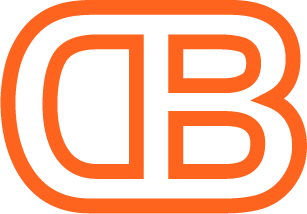Why ADR Isn’t the Most Important KPI
Introduction
Many Airbnb hosts focus on Average Daily Rate (ADR) as their main success metric, assuming that a higher ADR leads to better earnings. But the reality is, ADR alone doesn’t tell the full story—and can actually be misleading.
If your nightly rate is high, but you’re only booking a few nights a month, your total revenue could be significantly lower than a host who books more nights at a slightly lower rate. So what should you actually be tracking?
Let’s break it down and explore why dynamic pricing is more like concert ticket pricing than a flat hotel rate.
ADR Alone Doesn’t Maximize Revenue
ADR (Average Daily Rate) = Total Revenue / Number of Booked Nights
At first glance, a high ADR sounds great—it means you’re charging more per night. But here’s the problem: ADR doesn’t factor in occupancy.
For example:
Host A: Charges $150/night and books 10 nights → $1,500 revenue
Host B: Charges $100/night and books 20 nights → $2,000 revenue
Even though Host B has a lower ADR, they make $500 more per month simply because they filled more nights.
This is why successful revenue management isn’t just about setting a high nightly rate—it’s about balancing price and occupancy to maximize total revenue.
Dynamic Pricing is Like Concert Ticket Pricing
To understand how pricing works best in Airbnb hosting, think of it like concert ticket pricing.
🎟 Limited Inventory: Just like a concert venue only has a set number of seats, your Airbnb only has 31 nights per month to sell—once a night passes without a booking, that "seat" is empty and you’ve lost revenue forever.
🎟 Different Pricing for Different Seats:
VIP & Front Row = Weekends & Events – These are your high-demand nights when you can charge premium rates.
General Admission = Midweek Stays – These are your lower-demand nights that need to be priced competitively to sell.
Last-Minute Discounts = Unsold Seats Before Showtime – Just like venues drop ticket prices closer to the event to fill seats, adjusting pricing in the final days before a stay can help maximize occupancy.
A concert venue’s goal is to sell every seat at the highest possible price based on demand. If they only price based on the front row, they might sell some tickets, but the back of the venue stays empty, leaving money on the table. The same logic applies to Airbnb pricing—if you only focus on keeping ADR high, you may be missing out on maximizing revenue.
What You Should Be Tracking Instead of ADR
1. RevPAR (Revenue Per Available Room)
Formula: Total Revenue ÷ Total Available Nights in a Month
Why it matters: RevPAR takes both price and occupancy into account, giving a true measure of earnings potential.
Example:
Host A: $150 ADR, 10 nights booked → RevPAR = $50
Host B: $100 ADR, 20 nights booked → RevPAR = $66.67
Even with a lower ADR, Host B earns more per available night because they filled more nights.
2. Occupancy Rate
Formula: Total Booked Nights ÷ Total Available Nights
Why it matters: If your occupancy is low, your pricing strategy may need adjustments.
Example:
Host A: 40% occupancy
Host B: 90% occupancy
Higher occupancy often results in higher overall revenue, even if the ADR is slightly lower.
3. Booking Window
Why it matters: If guests are booking last-minute, you may be overpricing too far in advance and missing opportunities to fill your calendar earlier.
Solution: Adjust pricing based on demand trends—higher rates for early bookings, gradual reductions as check-in dates get closer.
Why Revenue Management is the Key to Success
Rather than just aiming for a high ADR, strategic revenue management focuses on:
✔ Dynamic Pricing Adjustments – Changing rates based on demand, seasonality, and competition.
✔ Minimum Stay Adjustments – Requiring longer stays in high-demand periods and relaxing restrictions closer to check-in dates.
✔ Targeted Discounts – Offering discounts for longer stays or midweek bookings rather than slashing prices across the board.
✔ Market Analysis – Comparing your performance to similar properties and adjusting accordingly.
Final Thoughts: Focus on Total Revenue, Not Just ADR
Instead of asking, “How high can I price my listing?” the better question is:
"How can I maximize my total revenue while maintaining strong occupancy?"
At the end of the day, it’s not about what you charge per night—it’s about how much you earn at the end of the month.
The best hosts sell every night at the highest possible price the market allows—just like concert venues sell every seat in the house. Hosts who focus on strategic revenue management, rather than just ADR, will consistently earn more.
